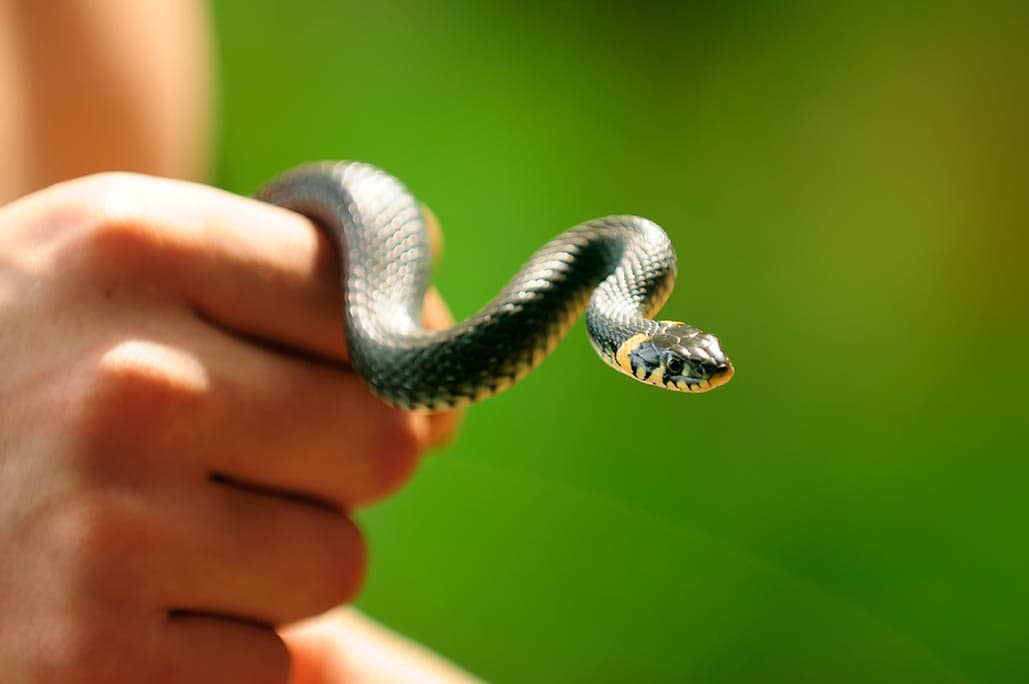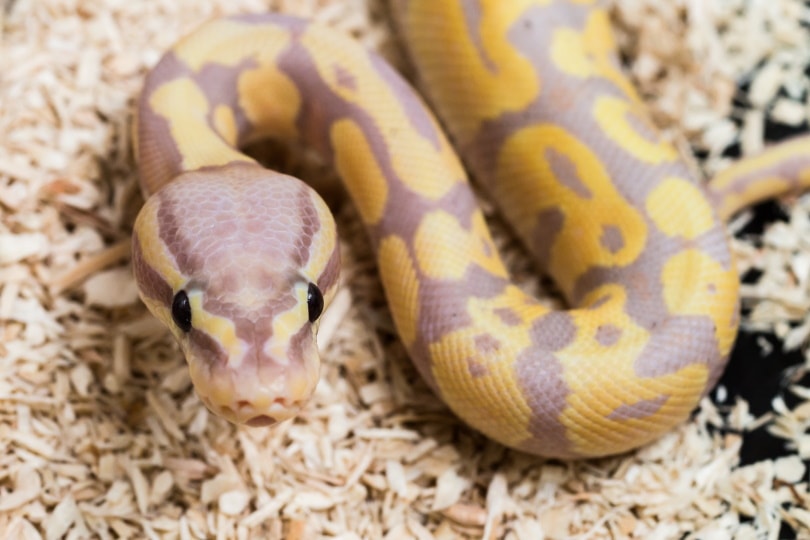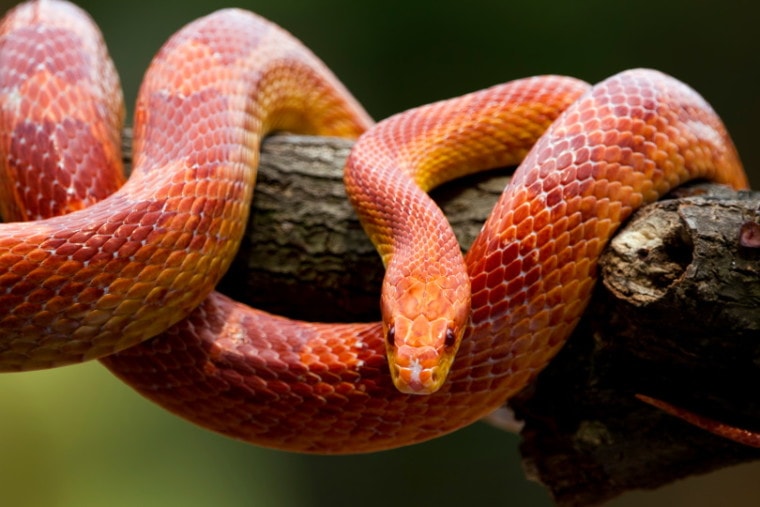
Corn snakes are one of the most popular snakes in the United States because they are perfect for beginners. They are easy to raise and don’t mind when you handle them. If you are thinking about getting one of these amazing snakes for your home but would like to learn a little more about them first, keep reading while we share several fascinating and fun corn snake facts.
The 12 Corn Snake Facts
1. Where Corn Snakes Got Their Name
Many people believe the corn snake got its name from living near cornfields. While it’s true that a cornfield is an ideal habitat for these snakes, they actually got their name from early settlers who noticed their resemblance to maize or “Indian corn,” which has red and black colored kernels in a similar pattern to the snake. As time passed, the name became permanent.

2. Their Cosmetic Varieties
These snakes are so popular, partly because breeders have learned to breed them as pets, which allows them to selectively breed a wide range of colors that you would be unlikely to see in nature. These colors can be solid or have stripes, polka dots, and many other patterns, so you are sure to find something you like.
3. Australia Considers the Corn Snake Invasive
The illegal pet trade has allowed corn snakes to find their way out of their native homes in North America to form new colonies in other areas. Australia, in particular, lists the corn snake as an invasive species due to the numerous habitats the country has that are ideal for supporting this breed. They captured 79 corn snakes from 2002–2014, but it seems the corn snake species still thrive down under.

4. Florida Listed the Corn Snake Population as a Special Concern
Corn snakes face several threats in Florida that are causing the numbers to drop quickly. These threats include habitat loss, illegally capturing them for pets, and climate change. Since the numbers continue to fall, Florida has put them on a list of special concerns, which will help pass laws to protect them.
5. They Look Similar to a Venomous Snake
The corn snake is often mistaken for the venomous copperhead snake, which results in many humans either running from it or killing it.
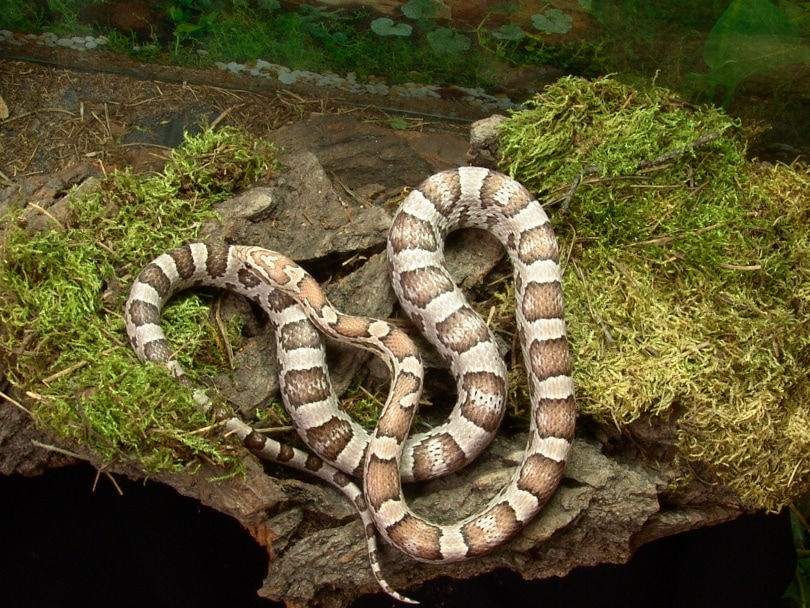
6. Corn Snakes Help Humans
Many people might not realize it, but corn snakes can be quite helpful to humans. They are non-venomous, so they pose no threat, yet they are voracious hunters who can reduce the rodent population in even a large field, so many farmers are happy to have them. These snakes will often hide under porches and other areas that mice frequent around houses. Allowing them to remain is a good way to ensure fewer mice get into your basement or cupboards.
- Read Also: Do Corn Snakes Make Good Pets
7. They Are Non-Venomous
We mentioned that the corn snake does not have venom, but we didn’t yet mention how it kills its prey. These snakes are constrictors, similar to the python and boa constrictors. It kills its prey by wrapping around it and slowly squeezing it until the victim can no longer breathe and dies of suffocation. Since this snake doesn’t need to eat every day, it can continue to apply the death squeeze long-term until the animal submits.
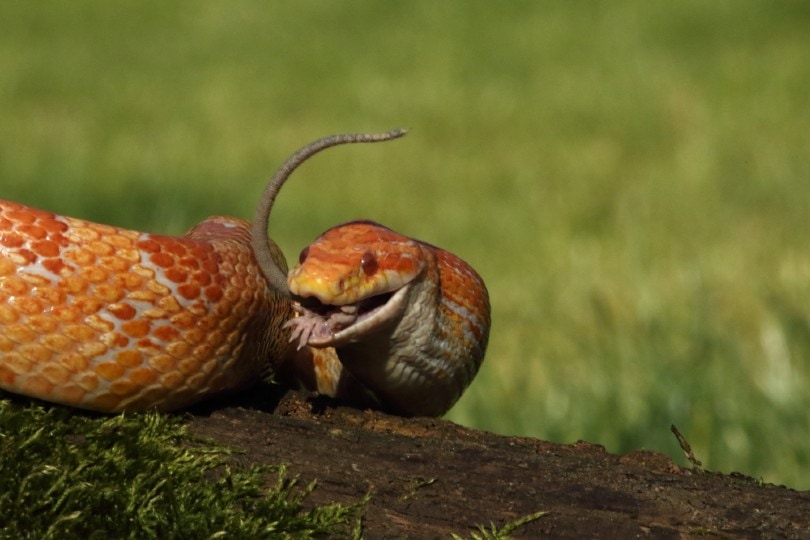
8. They Are Native to the United States
The corn snake is native to the eastern United States, and you can find it from Florida up to New Jersey. You can also find it on several islands in the Caribbean. It prefers wooded areas, rocky hillsides, and abandoned buildings.
9. Corn Snakes Have a Long Lifespan
You can expect your pet corn snake to live 20 years or more as long as you provide for its basic needs like food and shelter and give it plenty of free time outside the cage for mental stimulation.

10. They Need a Medium-Sized Aquarium
Your corn snake will require a medium-sized aquarium to hold it comfortably. Most experts recommend a 30–40-gallon tank with a screened lid.
11. Corn Snakes Have a Simple Diet
As a pet, your corn snake has a simple diet of frozen mice. These mice should have no parasites or diseases that can transmit to your pet like wild-caught food frequently does. These mice are easy to find in any pet store and are usually quite affordable, so your snake can eat them for every meal. You can also purchase live mice and crickets if you prefer, but you should avoid feeding the snake mice you caught around your home due to the parasites we just mentioned.
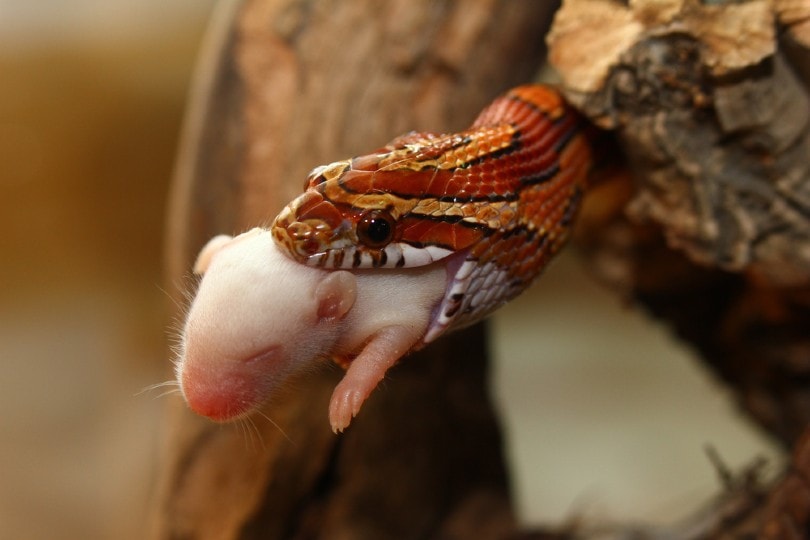
12. Corn Snakes Are Loners
Unless your corn snake is breeding, it prefers to be alone, so it’s easier for it to hunt and to hide. This also makes corn snakes easy to keep as pets because you don’t need to worry about pairing them up, as many other animals require.
Final Thoughts
Corn snakes make great pets because they are non-venomous and let you carry them around. They seem to enjoy the attention and will usually stay with you for several hours if you let them. Their diet consists of primarily frozen mice, which are easy to find and inexpensive to buy. You can find these snakes in a wide range of colors and patterns thanks to crossbreeding.
We hope you have enjoyed reading over this list, and it has armed you with the information you need. If we have convinced you to give one of the snakes a try in your home, please share these 12 fascinating and fun corn snake facts on Facebook and Twitter.
- Related topic: Corn Snake Feeding Chart: Schedule, Tips & Diet
Featured Image Credit: Kurit afshen, Shutterstock

